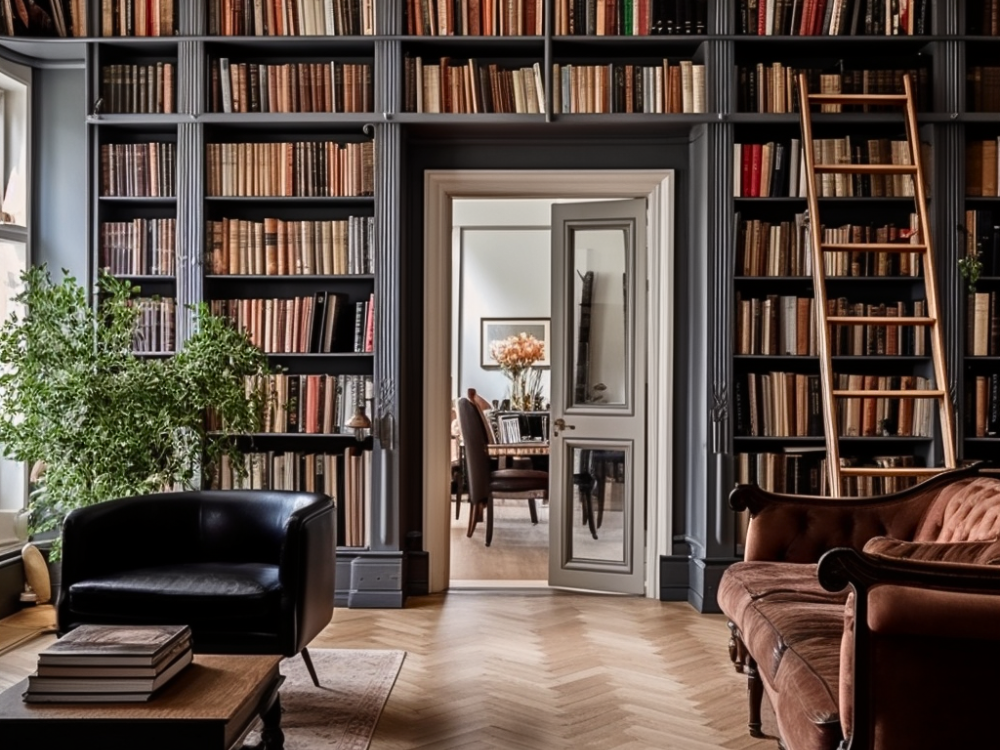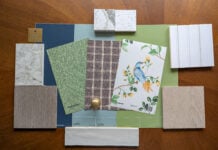Last Updated on March 24, 2025 by April

Creating a personal library adds character to your home while providing a dedicated space for your beloved books. A well-organized collection of books can transform any room into a cozy sanctuary for reading and learning.
Your home library can be as simple as a single bookshelf or as elaborate as an entire room dedicated to storing and displaying your books, making it a reflection of your interests and personality. The right setup helps preserve your books and makes them easily accessible whenever you want to read.
1) Choose a Dedicated Space

Select a quiet corner or room in your home where you can focus on reading without distractions. A spare bedroom, home office, or even a section of your living room can work well.
Make sure your chosen space has adequate lighting, either from windows or artificial sources. Good lighting prevents eye strain during reading sessions.
Consider the available wall space for shelving, and ensure the floor can support the weight of loaded bookshelves. Leave enough room to move around comfortably between shelves.
2) Install Sturdy Shelving

Select shelves rated to hold at least 50 pounds per linear foot to support your book collection safely. Wall-mounted shelves need proper anchoring into wall studs.
Choose adjustable shelving systems to maximize your space usage. Metal or solid wood shelves provide the most reliable support for heavy books.
Measure your space carefully before installation and leave room for future expansion. Keep shelves level during mounting to prevent books from leaning.
3) Organize by Genre

Arrange your books by main genres like fiction, non-fiction, and reference materials. This creates logical sections that make finding specific books easier.
Within each genre, you can create subgenres. For example, split fiction into categories like mystery, science fiction, and romance.
Add simple labels to your shelves to mark different genres. This helps maintain organization and lets guests browse your collection more easily.
4) Use Proper Lighting

Your home library needs adequate lighting to protect your eyes and create a comfortable reading environment. Install a mix of ambient and task lighting to ensure proper illumination.
Position reading lamps near seating areas to provide focused light where you need it most. A combination of ceiling lights and table lamps works well for most spaces.
Natural light from windows adds warmth during the day, but consider adding curtains or blinds to prevent direct sunlight from damaging your books.
5) Create a Reading Nook

Designate a cozy corner of your library for a comfortable reading chair or small loveseat. Add soft cushions and a warm throw blanket to make the space inviting.
Install good lighting with an adjustable reading lamp to prevent eye strain. A small side table provides space for your current book and a warm drink.
Consider adding a footstool or ottoman to support proper posture while reading for extended periods.
6) Incorporate Comfortable Seating

A cozy reading chair can transform your home library into a reading sanctuary. Select a chair with proper back support and comfortable armrests for extended reading sessions.
Add a small side table next to your seating for drinks, books, and reading accessories. A reading lamp on the table provides essential task lighting.
Consider adding a soft footstool or ottoman to elevate your feet while reading. This simple addition helps maintain good posture and enhances comfort during long reading sessions.
7) Add Personal Touches

Display cherished photos, artwork, or keepsakes alongside your books to make the space uniquely yours. A few meaningful decorative items can transform basic shelves into a personal sanctuary.
Incorporate items that reflect your interests and experiences, such as travel souvenirs or family heirlooms. Your library should tell your story through both its books and decorative elements.
8) Use Bookends for Organization

Bookends serve as practical tools to keep your books upright and organized on shelves. Select sturdy bookends that complement your decor while being heavy enough to support your books.
Place matching bookend pairs at both ends of shelves to create clean, defined sections. This makes it easier to organize books by genre, author, or topic.
You can find bookends in various materials like metal, wood, or stone to match your library’s aesthetic. Choose designs that fit your space while maintaining functionality.
9) Include a Ladder for High Shelves

You’ll need safe access to books stored on upper shelves. A sturdy library ladder adds both functionality and visual appeal to your home library.
Choose between rolling ladders that slide along a track or foldable step ladders. Rolling ladders work best for continuous shelving, while step ladders offer portability.
Make sure your ladder matches your library’s style and finish. Wood or metal options can complement traditional or modern designs.
10) Rotate Your Collection Regularly

Refresh your library’s display by rotating books every few months. Moving books between shelves creates a dynamic space and helps you rediscover forgotten titles.
Keep track of books you’ve read and haven’t read. Place unread books in prominent positions where you’ll notice them more frequently.
When it’s time to rearrange or even move your collection, keeping your books safe from damage is essential. Proper packing techniques can help prevent bent covers, torn pages, or warped spines — ensuring your library stays just as beautiful in its new setup as it was before.
Store seasonal or temporarily unused books in boxes or less accessible shelves. This practice maintains an active, engaging collection while preserving space for new additions.



Wonderful inspiration as I set up a reading area in my new house. Thank you!
Love the many varied design styles. My library area is complete but there are a few touches that some of your reading spaces inspired! Thanks so much!